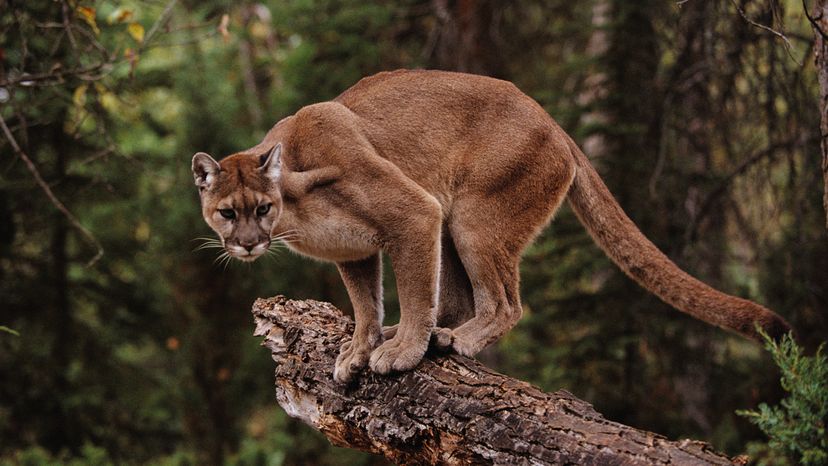Mountain lions are powerful, agile predators, with adult males typically weighing between 120 to 220 pounds (54.4 to 99.8 kilograms) and females weighing less, around 64 to 100 pounds (29 to 45.4 kilograms). Despite being large cats, cougars do not typically fall within the "big cats" category.
With long, muscular limbs and large paws that help them navigate steep terrain and leap great distances, cougars are fast and strong. Their coat is typically a uniform tan or reddish-brown, providing excellent camouflage in various habitats, from dense forests to open plains.
One of the most striking features of cougars is their long tail, which can measure up to one-third of their body length. This tail helps with balance, especially when chasing prey or navigating through rocky landscapes.
Cougars have keen eyesight and hearing, making them formidable hunters capable of silently stalking and ambushing their prey.
